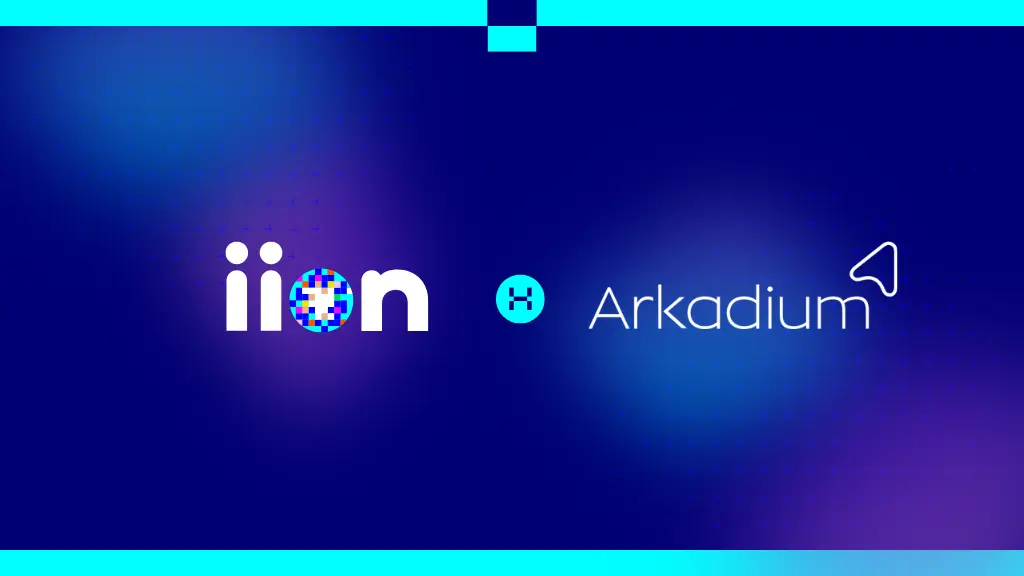AdTech
How to Avoid Intrusive Advertising To Deliver Better Ads in the Gaming World

In today's rapidly advancing digital era, "intrusive advertising" stands out as a term that advertisers and audiences alike must grapple with. Intrusive advertising refers to any advertising that makes the user journey an unpleasant experience.
These experiences can be off-putting, leading to a reluctance to revisit certain platforms. For advertisers, this creates a dilemma: how to capture the attention of potential customers without creating any annoyance.
What is Intrusive Advertising?
Intrusive advertising refers to those marketing strategies that interrupt a user's experience, often without their permission. Generally, these are ads that pop up unexpectedly, play unsolicited videos, or divert the user from their primary task. While the intention is to capture attention, these methods often lead to user annoyance and brand aversion.
Diving deeper into the realm of intrusive advertising, we uncover its origins in the early days of the Internet. As digital spaces grew, so did the competition for user attention. Brands began searching for ways to ensure their message stood out, leading to more aggressive advertising methods. However, this approach frequently backfires.
Research indicates that users are more likely to have a negative perception of brands that resort to intrusive advertising, associating them with annoyance and disruption.
Yet, it's not all bleak. The digital age also brings innovative solutions. The rise of ad-blockers is a testament to users' desire for control over their online experience. And, as we've discussed, in-game advertising offers a harmonious alternative, striking the balance between brand visibility and user satisfaction.
Ultimately, for brands to succeed in this age of digital transformation, it's imperative to prioritize the user experience. By understanding the nuances of intrusive advertising and seeking out less disruptive strategies, brands can foster genuine connections with their audiences, creating lasting impressions that go beyond the fleeting moment of an ad.
What Makes An Ad Intrusive?
Pinning the intrusiveness of the ad on a single factor may be incorrect. An ad that may be deemed as intrusive by one player might not be intrusive for another. There are multiple factors that make an ad intrusive, some of which are given below.
Unexpected Placement: Irregularly placed ad units can prove to be detrimental to the user experience and, in turn, demotivate them enough to uninstall the application and never return. Ads should be shown in natural transitions, such as when the level ends or the player loses their life.
Disruptive Timing and Frequency: Ad frequency is key for game experience and publishers should consider ads as a part of the game. Ads that show up during critical moments of a game or in the middle of engaging content, causing an interruption.
Unskippable Content: Ads should be a part of the gameplay and players should have the choice to control their ad experience, just like they control the game. Users want to decide how long they encounter an ad. This control is lost when ads don't let users skip or close them, making users engage with the content involuntarily.
Volume and Sound: In the gaming zone, unexpected noises can be a major buzzkill. An ad with loud or sudden audio disrupts concentration, harming the experience. It's like getting a jump scare when you least expect it.
Invasive Design: When an ad takes up almost your entire screen while you're playing a game it's like when something big blocks your view, making it tough to enjoy or move around in the game. Just not the kind of interruption gamers want.
Forced Interaction: Nobody likes being pushed around, right? It's the same with ads. An ad that makes you click or interact before you can keep playing your game is not much welcomed when used too often.
Lack of Relevance: In the gaming world, context is key, especially when it comes to ads. If an ad doesn't match what you're into or the storyline of the game, like a puzzle piece that just doesn't fit. This disconnect can take away from the whole gaming experience.
Low-Quality Ads: Irrelevant and poor-quality advertisements can be a deal-breaker for players. However, this may not totally fall on the shoulders of the publishers, as the ad networks they are working with should be looking at quality control. Therefore, it becomes critical for publishers to choose a highly-reputed partner that brings high-quality ads to the user without hampering their gaming experience.
Intrusive Ad Types in Gaming
Certain formats are known as intrusive ad types, which, as the name suggests, intrude upon the user experience, often causing frustration and irritation.
Interstitial Ads: Full-screen ads that appear between game levels or during breaks, disrupting the gaming experience.
Unskippable Video Ads: Video ads that don't offer users the option to skip or close, forcing them to engage with the content.
Pop-Up Ads: Ads that suddenly appear on the screen, obstructing the game view and requiring user interaction.
Banner Ads with Forced Interaction: Banner ads that force users to interact or click through before they can proceed with the game.
Audio-Triggered Ads: Ads with sudden or loud audio that startles users, creating a jarring experience.
Invasive Overlay Ads: Ads that cover a significant portion of the screen, obstructing important game elements and hindering navigation.
Examples of Intrusive Advertising in Gaming?
An example of intrusive advertising in games is when players experience disruptive and unrelated pop-up ads that appear during crucial moments of gameplay, such as in the middle of an intense battle or while navigating a critical part of the game. These intrusive ads interrupt the gaming experience, causing frustration and distraction for players.
Another example is in-game ads that force players to watch lengthy, unskippable video ads without any clear relevance to the game, significantly disrupting the flow and enjoyment of the gaming session.
Both of these examples highlight a common thread in intrusive advertising: the unsolicited interruption of the user experience. The user did not ask for these interruptions, nor did they expect them. Yet, the marketing message is thrust upon them, requiring action on their part to resume their intended activity.
What Is Non-Intrusive Advertising in Gaming?
Non-intrusive advertising, as the name suggests, refers to advertising techniques that seamlessly integrate into the user experience without causing disruption. When implemented in the gaming context, in-game advertising is a modern approach that places ads directly within digital games, allowing brands to connect with users during the gameplay. This method transforms traditional advertisements into interactive and immersive experiences that resonate with gamers.
Boldly contrasting with intrusive advertising, in-game advertising ensures the player's experience is uninterrupted, while precisely delivering the brand’s message.
By respecting the user's space and offering genuine value, non-intrusive ads enhance the likelihood of positive brand associations and increased engagement, making them an invaluable tool in a modern advertiser's library.
However, it's crucial to tread carefully. Even within in-game advertising, there's a risk of becoming intrusive if not executed with precision and understanding of the gaming context.
Non-Intrusive Ad Types in Gaming
Non-intrusive advertising strikes the perfect balance between visibility and discretion, offering brands a way to share their message without interrupting the user's experience. This subtle approach has given rise to several advertising methods that prioritize the user's comfort. At its core, what makes these strategies non-intrusive is that players get to decide if they want to see the ad, what they get in return, or how much it blends into the game's aesthetic.
1. Product Placement: Product placement is a subtle integration of real-world brands into the game environment, creating a smooth blend between the virtual and real. In-game product placements go beyond traditional advertising by immersing players in a virtual world enriched with familiar brands, adding a touch of reality to the gaming experience.
2. Rewards for Watching Ads: In this interactive format, players proactively choose to partake in ad experiences, weaving it seamlessly into the fabric of the game. This intentional decision to engage with ads transforms the act of watching into a value-driven exchange, where players willingly invest time in viewing content for the promise of in-game rewards. This creates a win-win-win situation for the brand, publisher, and player, fostering an active and mutually beneficial engagement.
3. Sponsored Events: Game challenges or events by brands seamlessly become part of the game. This is often seen in sports games, mirroring the real-life reliance on sponsorships in the sports genre.
4. Blended In-Game Ads: Ads seamlessly fit into the game world, like virtual billboards or branded items, becoming a natural part of the virtual scenery. For instance, you might spot Pepsi ads on billboards or branded items within the virtual world.
6. Branded Customizations: Players can personalize their in-game items with branded skins or accessories, giving their gaming experience a unique and branded touch. It's all about adding that personal flair to the virtual stuff they own
So, yeah, gaming and ads can totally get along without bothering anyone!
Examples of Non-Intrusive Advertising in Gaming
Rewarded Ads: A widely used format in mobile gaming where watching ads is a part of the game mechanics and the gameplay itself. Players receive an in-game value in exchange for watching an ad for a specified duration. You can see this ad format in almost every mobile game.
Blended Audio Ads: Blended audio ads incorporate background sounds or voiceovers that align with the game's atmosphere, enhancing immersion. An example can be, while you are playing a medieval-themed game, and an audio ad introduces a new quest with thematic music, that resonates with the game world.
Blended Video Ads: Blended video ads smoothly integrate into the gaming content, appearing in a natural and non-disruptive manner. These ads can be part of the game's storyline, providing an engaging and integrated experience. In a racing game, a video ad seamlessly showcases a new car model during a virtual race pit stop, enhancing the realism and adding value to the gameplay.
Blended Display Ads: Blended display ads are integrated visual elements that harmonize with the game's design, appearing in a way that feels organic and non-intrusive. These ads contribute to the overall aesthetics of the gaming environment. In a fantasy RPG, a blended display ad could be a subtle, in-world billboard promoting a magical potion, seamlessly fitting into the fantasy landscape without disrupting gameplay.
These non-intrusive formats become an organic part of the gaming experience rather than interruptions.
Intrusive vs Non-Intrusive Advertising
As publishers look to scale their revenue through in-game ads, pushing endless, irrelevant, and randomly placed ads can be a bad choice. Before publishers build their in-game ad strategy, they should understand the key differences between intrusive and non-intrusive advertising.
Recognizing the different ad types is crucial for both publishers and advertisers. For advertisers, understanding the drawbacks of these ad formats opens the door to more user-friendly strategies, such as in-game advertising or content marketing, and encourages a thoughtful selection of ad formats. Meanwhile, for publishers, this awareness aids in finding the right balance when integrating intrusive formats into their game mechanics. The key lies in crafting an ad monetization strategy during the game development stage that perfectly aligns with the game dynamics. This ensures that ad occurrences not only avoid harming the game experience but also enhance and complement it.
Things To Keep In Mind While Deploying Ads In Games
As in-game ads generate billions in revenue for publishers, it is critical to strike a balance between generating revenue and player experience while deploying ads. To provide a smooth ad experience, publishers need to execute their in-game ad strategy flawlessly. Here are some things to keep in mind for publishers when they deploy ads in their games.
- Know Your Audience: With millions of players glued to their screens to get their daily dose of gaming, it is extremely difficult to pinpoint a single demographic that can be targeted through these ads. With comprehensive tools available to game publishers for tracking, segmenting users is a good method to offer users a tailored ad experience. Moreover, efficient segmentation also provides advertisers with a refined audience, which can increase ad value, thereby increasing revenue.
- Consider Ad Monetization Early in the Development: Emphasizing this point once again, view ads as an integral aspect of the overall gaming experience. Since players engage with ad content as frequently as they do with gaming content, it's crucial for publishers to establish an ad monetization strategy that harmonizes with the gaming dynamics. Develop an ad composition that aligns with your game mechanics and revenue goals. This primarily involves selecting ad formats, optimizing frequency and identifying placements that align with the gaming journey.
- Keep A Check On Frequency: Ads are a great way to generate revenue, but they should not come at the cost of losing your player base. While executing an ad monetization strategy, publishers need to be wary of the frequency of ads that a user can get. Too many ads can be harmful to the player experience, which can lead to more players leaving the game forever and even damage the reputation of the game online.
- Avoid Disruptive Formats: As the world increasingly embraces non-intrusive ad formats, intrusive ones become less tolerable for players. While some formats may offer better payouts, they can be disruptive and harm long-term revenue by increasing turnover rates. Choosing non-intrusive formats like rewarded ads, interactive ads, in-game blended ads, and banner ads provides a safer option for creating a compelling ad composition that results in long-term game revenue.
- Select a Reputable Ad Monetization Partner: Ad quality plays a crucial role in determining whether an ad is intrusive or not. However, the responsibility doesn't solely rest on the game publisher. The quality of ads is closely tied to the demand from your ad exchange or network. Choose partners carefully to ensure they capture unique and valuable demand tailored to your audience. Direct brand partnerships are an excellent strategy to elevate ad quality and generate premium revenue.
Conclusion
While deploying an ad strategy for games, publishers should be mindful of parameters such as placements, frequency, demand quality and selection of ad formats that ensure the ads are as non-intrusive as possible.
If that sounds like a lot to juggle with, iion is here to help you. With our game monetization solution, fusiion, publishers can maximize game revenue by implementing the right game advertising strategy, while making sure the experience is not hampered.
With fusiion game publishers can:
- Utilize non-intrusive and quality ad placements in your games among multiple rich media formats.
- Activate fresh revenue streams from brand campaigns by unlocking direct and programmatic demand sources.
- Improve your ad monetization playbook with expert support.
- Enhance monetization resilience through revenue diversification, powered by additional brand and agency campaign budgets.
fusiion offers a range of non-intrusive ad formats, ensuring effective ad placements and unique demand from our partner brands and agencies, all while keeping players engaged. Want to explore our next-gen solutions?
Request a free callback today!























